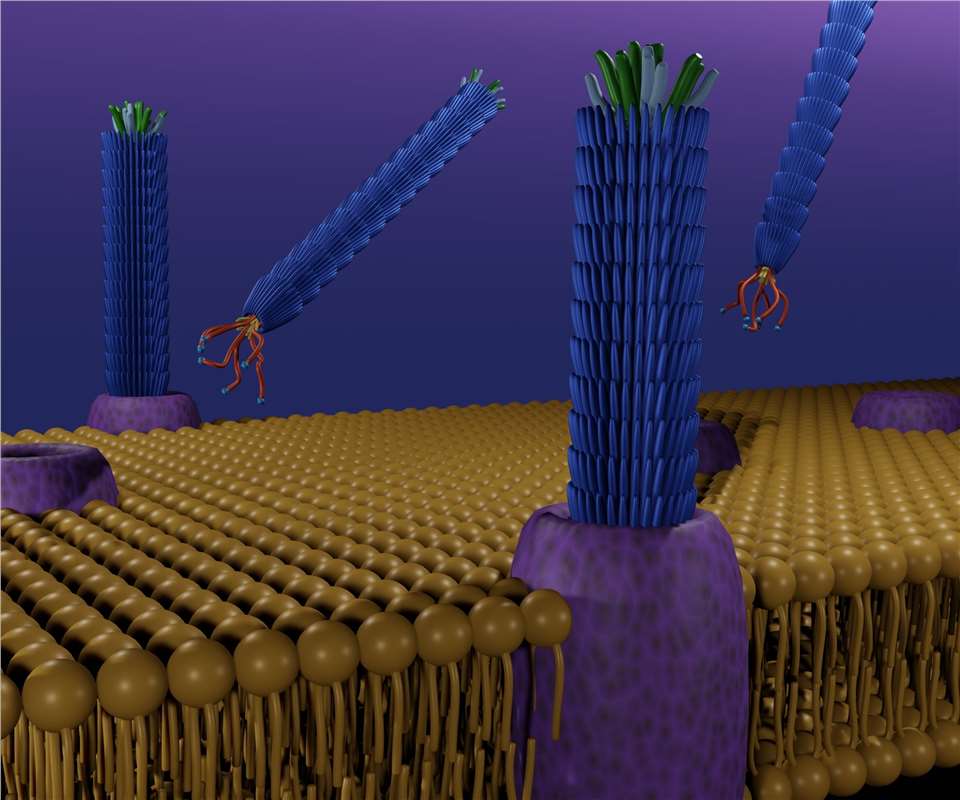Surface display technology is a technology that combines gene expression products and affinity selection. This technology can be used to screen and modify functional peptides, antibodies, and so on. Surface display technologies are mainly categorized into prokaryotic and eukaryotic display libraries, among which phage display and yeast display libraries are the most widely used and mature technologies. Based on our rich practical experience and advanced research platform, Creative Biolabs provides comprehensive surface display services, such as phage display services and yeast display services.

Phage display technology is the use of genetic recombination methods to combine the gene of the target protein with the gene of the phage coat protein, ultimately displaying the target protein as a fusion protein on the surface of the phage. Common phage display libraries include random peptide libraries, immune libraries, natural libraries, and others. With the discovery and development of phage display technology, it is now widely applied in various fields. For example, it is used in establishing antigen-antibody libraries and for many applications including drug design, vaccine research, pathogen detection, gene therapy, antigen epitope research, and cell signal transduction research.
Ribosome display technology is a novel method that utilizes functional protein interactions for screening, building upon the foundation of polyribosome display technology. It combines the correctly folded protein with its mRNA on the ribosome simultaneously, forming an mRNA-ribosome-protein trimer. The linkage of genotypes and phenotypes of target proteins allows for the selection of antibody and protein libraries, as well as in vitro protein modification. Ribosome display technology is a crucial tool for protein screening. Currently, some high-affinity proteins that specifically bind to target molecules, including antibodies, peptides, and enzymes, have been successfully screened using this technology.
Bacterial display technology is a technique used to express target proteins on the surface of bacteria to enhance their functionality. Commonly used host bacteria for bacterial surface display include Escherichia coli, Lactobacillus, Xanthomonas, Pseudomonas putida, and Bacillus. The primary carrier proteins for bacterial surface display systems include extracellular membrane proteins, cell surface appendages, lipoproteins, virulence factors, cell membrane pore-forming proteins, and cell wall-associated proteins. Different bacterial display systems have various advantages and disadvantages. When selecting a suitable bacterial display system, compatibility between the carrier protein and the target protein should be the first consideration. Currently, bacterial display technology has found widespread applications in recombinant bacterial vaccines, biofuel cells, whole-cell catalysts, and other fields.
The principle of yeast surface display technology involves fusing the exogenous protein gene with a specific vector gene and introducing it into yeast cells. The fusion protein contains a structure that can anchor to the yeast cell wall. After transcription and translation, the exogenous protein becomes immobilized and expressed on the surface of yeast cells. Yeast surface display technology, a eukaryotic display system, is one of the most commonly used surface display technologies and has gradually become an effective technology in the field of modern life sciences. It has a wide range of applications in many aspects.
Display technologies based on prokaryotic expression systems have some disadvantages, such as the limited display of small molecule fragment antibodies and the selection of different codons from eukaryotic cells during protein expression. The use of mammalian cell surface display technology effectively addresses these issues. Mammalian cell surface display technology can not only display full-length antibodies but also utilize the eukaryotic expression system to guide the correct folding of proteins and provide a variety of post-translational processing functions, such as complex N-glycosylation and accurate O-glycosylation. Therefore, mammalian cell-displayed antibodies closely resemble natural higher biological protein molecules in terms of molecular structure, physicochemical properties, and biological functions. They are stably expressed and secreted at high levels in mammalian cells, demonstrating that mammalian cell display technology offers potential advantages that other technologies do not possess.
Phage Display System Overview
Ribosome Display System Overview
Bacterial Display System Overview
Yeast Display System Overview
Mammalian Cell Display System Overview
Plasmid Display System Overview
Creative Biolabs has a wealth of knowledge and experience in surface display. We are delighted to share our knowledge and experience in the field of surface display with you.
All listed services and products are For Research Use Only. Do Not use in any diagnostic or therapeutic applications.